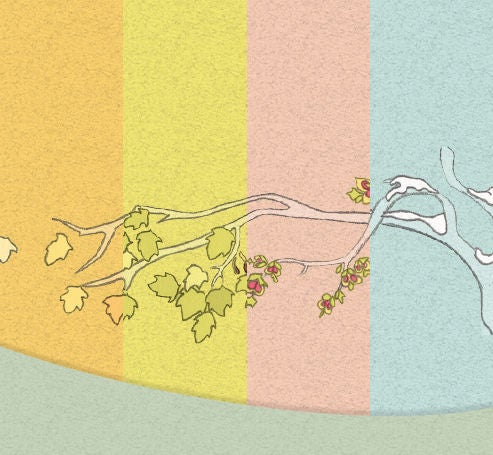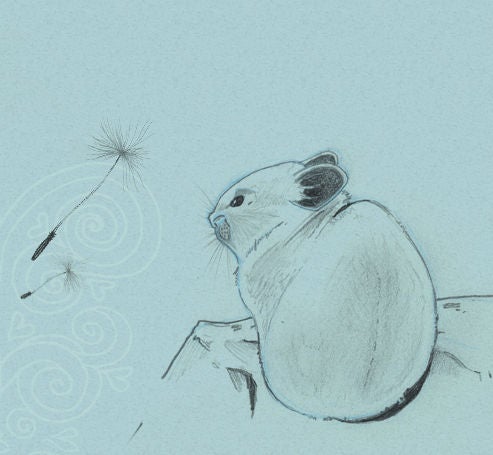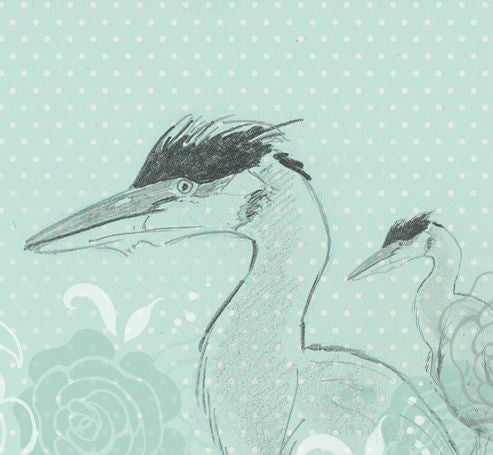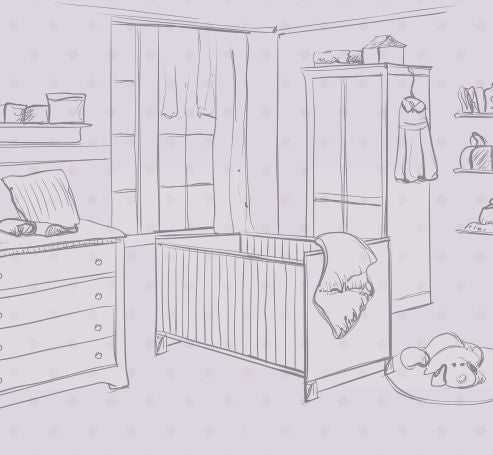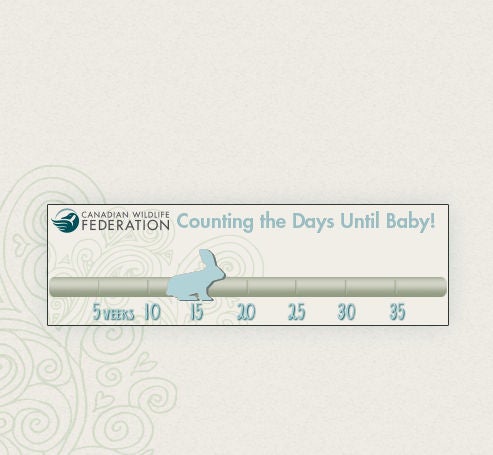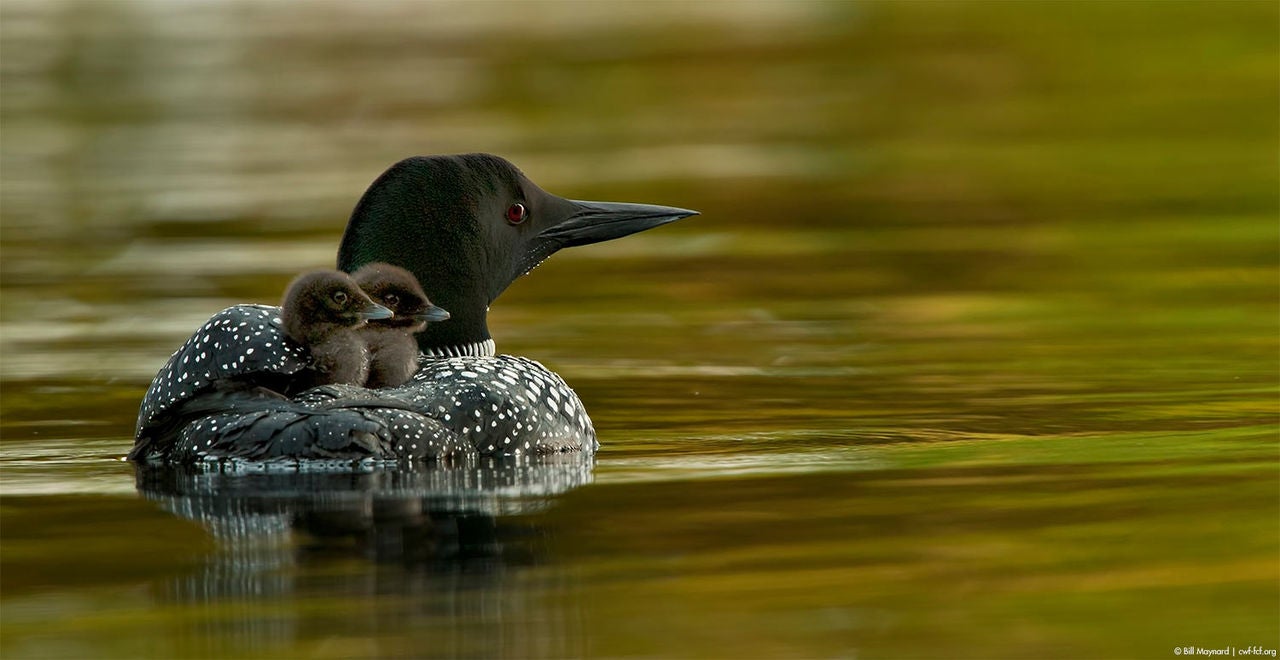Can’t Sleep?
Did you know that between 65 and 95 per cent of women notice a change in their sleep patterns when they’re pregnant? If you spend most nights tossing and turning and just can’t seem to get some shut eye, guess what? You’re not the only one awake in the wee hours of the morning. Nocturnal animals are active at night too.
Permission to Star Gaze
WINTER
In the summer, toads work under the cover of darkness to hunt the pests in your garden like slugs, sowbugs, earwigs, cutworms and gypsy moths. But when Jack Frost pays a visit to your neighbourhood, toads need a spot to overwinter. While frogs are happy to pass the winter at the bottom of a pond, toads are terrestrial hibernators: they'll dig deep into soft garden soil, beneath the frost line, to spend the long freezing months in dormancy. You can help give toads a winter residence by building a hibernaculum:
- Excavate a hole at least 1 m square x 1 m deep.
- Fill the entire hole with soft sand.
- You can cover the surface with compost to keep the hibernaculum warmer and give overwintering toads additional protection from freezing temperatures.
SPRING
Thanks to Thomas Edison’s light bulb moment, up to 63 per cent of the world lives in areas where bright city lights outshine the sky’s brightness by 10 per cent. But did you know lighting up the night can actually harm nocturnal animals? Every year, millions of songbirds depart Central and South America, the Caribbean and Mexico back to the comfort of our own backyards, only to return to their southern abodes in the fall — all under the cover of darkness. But when bad weather hits — particularly high cloud cover, precipitation or fog — these birds are forced to fly at lower altitudes where they’ll be attracted to tall lit buildings, communication towers, light beams at airports, floodlit obstacles and lighthouses, and collide with these obstacles. According to Toronto’s Fatal Light Awareness Program, 100 million birds in North America die on this journey every year.
So while you’re up at night, give your fellow night owls a helping hand:
- If you live in an apartment building, do campaign to switch off lighting systems from 11 p.m. to 7 a.m. in your building.
- Don’t let vanity lighting like rooftop floodlights burn into the night during periods of migration. If you must use them, use red strobe red lights, which researchers have found birds to be less attracted.
- Do install motion sensitive lighting.
- Do turn off overhead lights and use task lighting.
- Don’t use overhead lighting without closing the blinds.
- Do swap mercury vapour bulbs for sodium bulbs — lights with a yellow undertone are less attractive to roaming songbirds than whitish blue lights.
SUMMER
While you might see toads out and about during the day, they’ll spend most of their time underground, beneath logs or in rock crevices. But when the sun goes down, toads get to business, hunting garden pests like slugs, sowbugs, earwigs, cutworms and gypsy moths. In a single growing season, a busy toad can consume more than 10,000 of these uninvited guests. Pretty handy critters to have around, aren’t they? You can help give them a shady spot by building a toad home: :
- Excavate a hole at least 1 m square x 1 m deep.
- Fill the entire hole with soft sand.
- You can cover the surface with compost to keep the hibernaculum warmer and give overwintering toads additional protection from freezing temperatures.
AUTUMN
Thanks to Thomas Edison’s light bulb moment, up to 63 per cent of the world lives in areas where bright city lights outshine the sky’s brightness by 10 per cent. But did you know lighting up the night can actually harm nocturnal animals? Every year, millions of songbirds depart Central and South America, the Caribbean and Mexico back to the comfort of our own backyards, only to return to their southern abodes in the fall — all under the cover of darkness. But when bad weather hits — particularly high cloud cover, precipitation or fog — these birds are forced to fly at lower altitudes where they’ll be attracted to tall lit buildings, communication towers, light beams at airports, floodlit obstacles and lighthouses, and collide with these obstacles. According to Toronto’s Fatal Light Awareness Program, 100 million birds in North America die on this journey every year.
So while you’re up at night, give your fellow night owls a helping hand:
- If you live in an apartment building, do campaign to switch off lighting systems from 11 p.m. to 7 a.m. in your building.
- Don’t let vanity lighting like rooftop floodlights burn into the night during periods of migration. If you must use them, use red strobe red lights, which researchers have found birds to be less attracted.
- Do install motion sensitive lighting.
- Do turn off overhead lights and use task lighting.
- Don’t use overhead lighting without closing the blinds.
- Do swap mercury vapour bulbs for sodium bulbs — lights with a yellow undertone are less attractive to roaming songbirds than whitish blue lights.
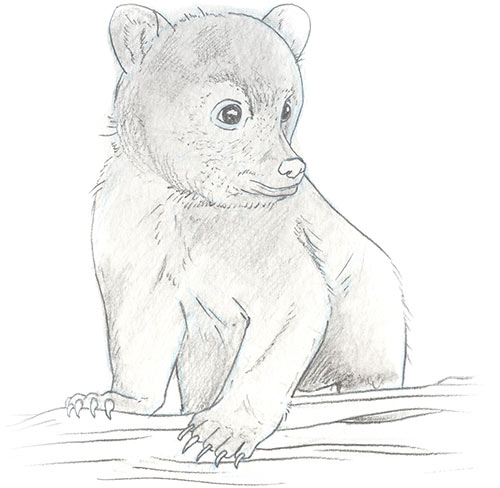 If you were a black bear, you would be delivering your baby any day now!
If you were a black bear, you would be delivering your baby any day now!
The gestation period for black bears is 215 to 230 days! Females give birth to her cubs in their winter den. Usually two cubs are born, but sometimes she can have as many as five. The cubs grow quickly and by the time spring rolls around, they’ll be ready to leave the den with their mother.
- 0
- 1
- 2
- 3
- 4
- 5
- 6

